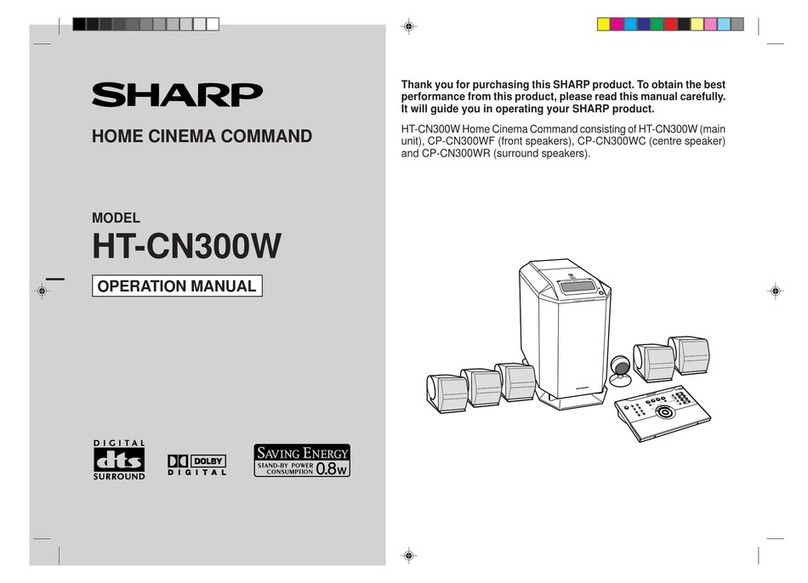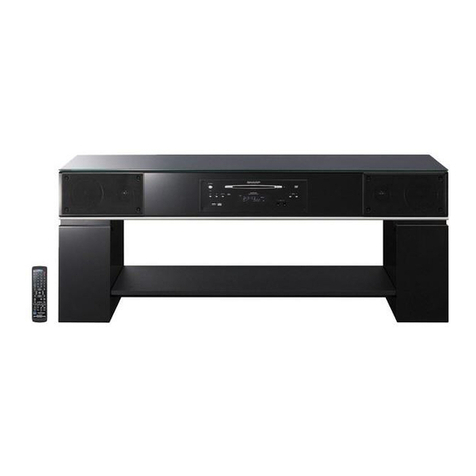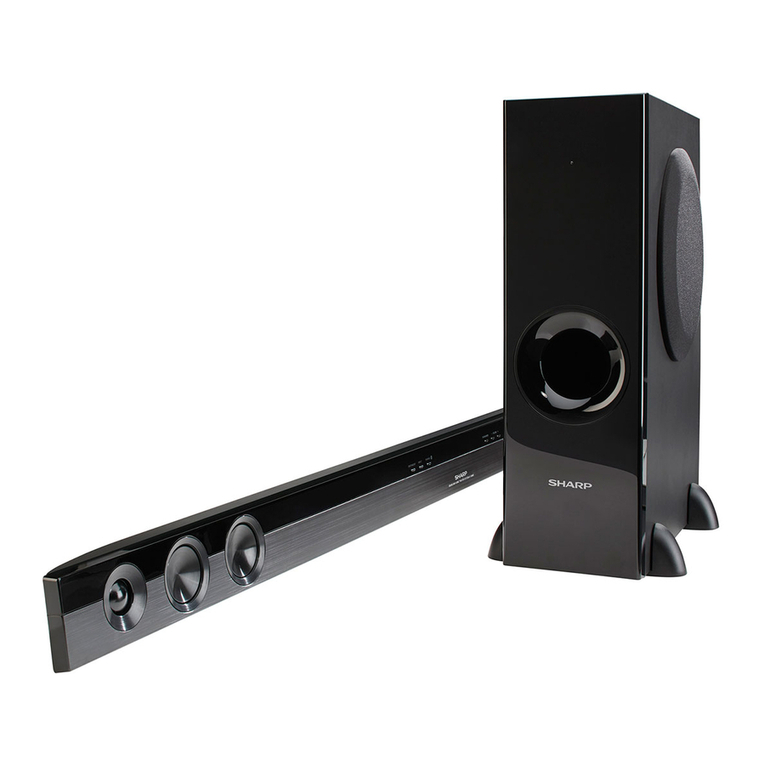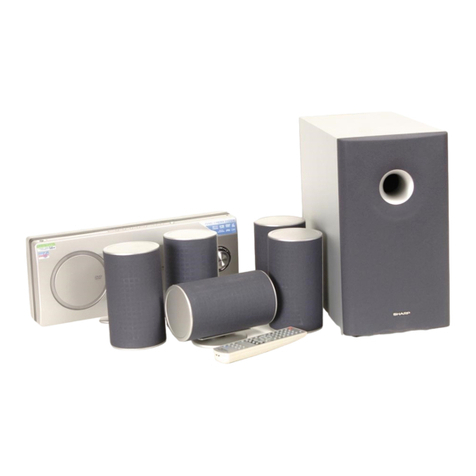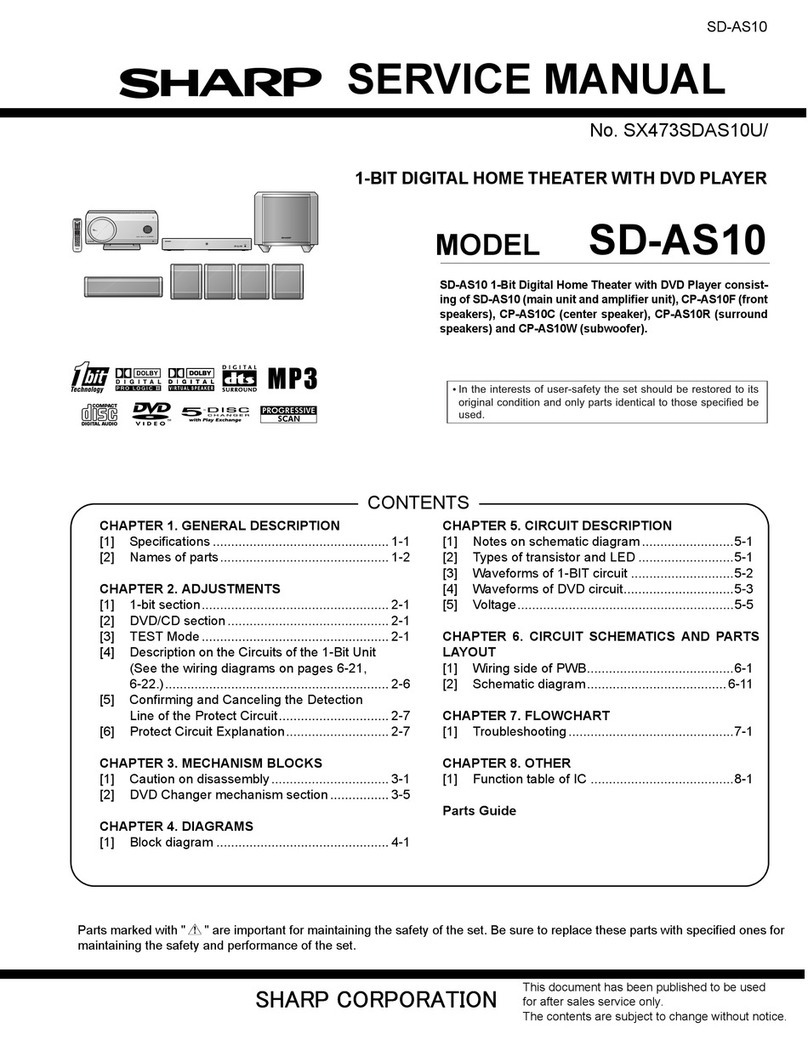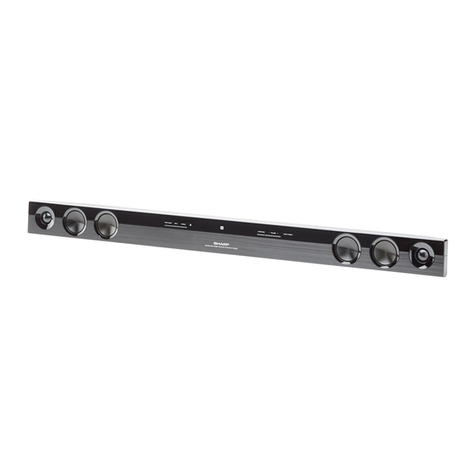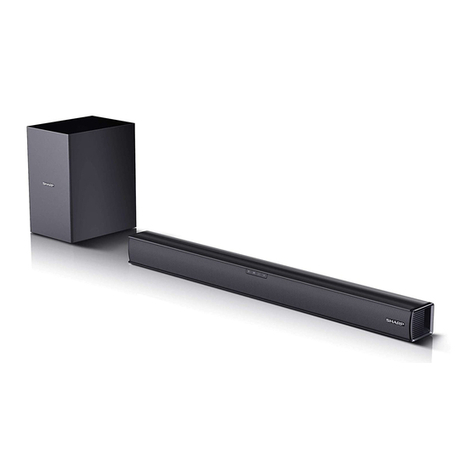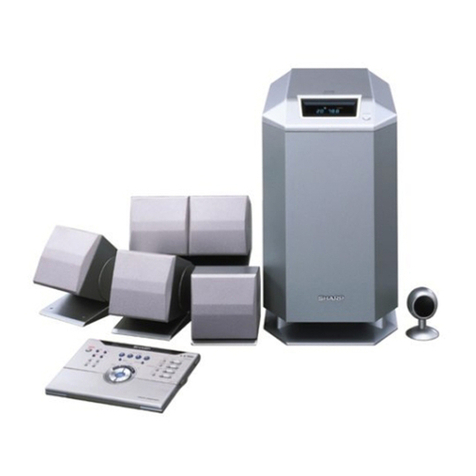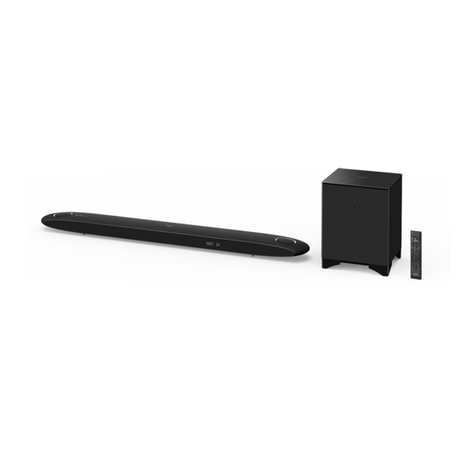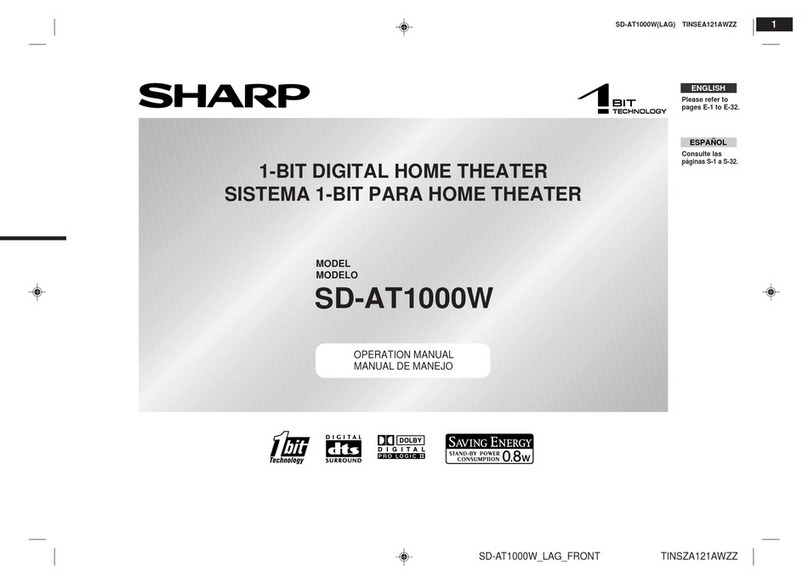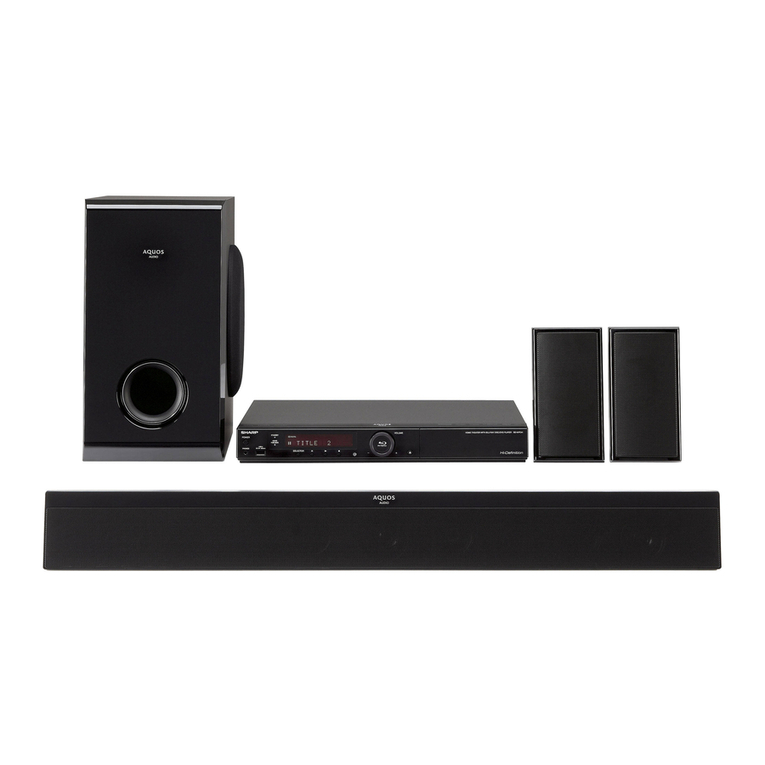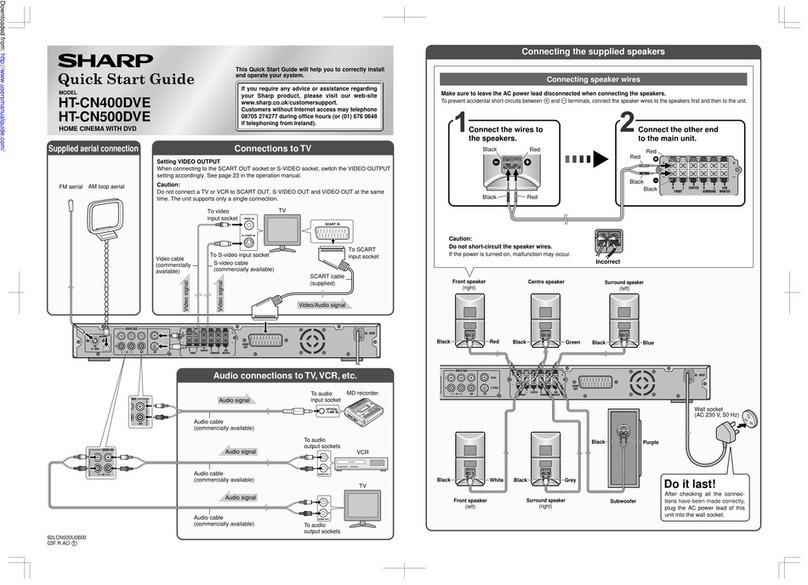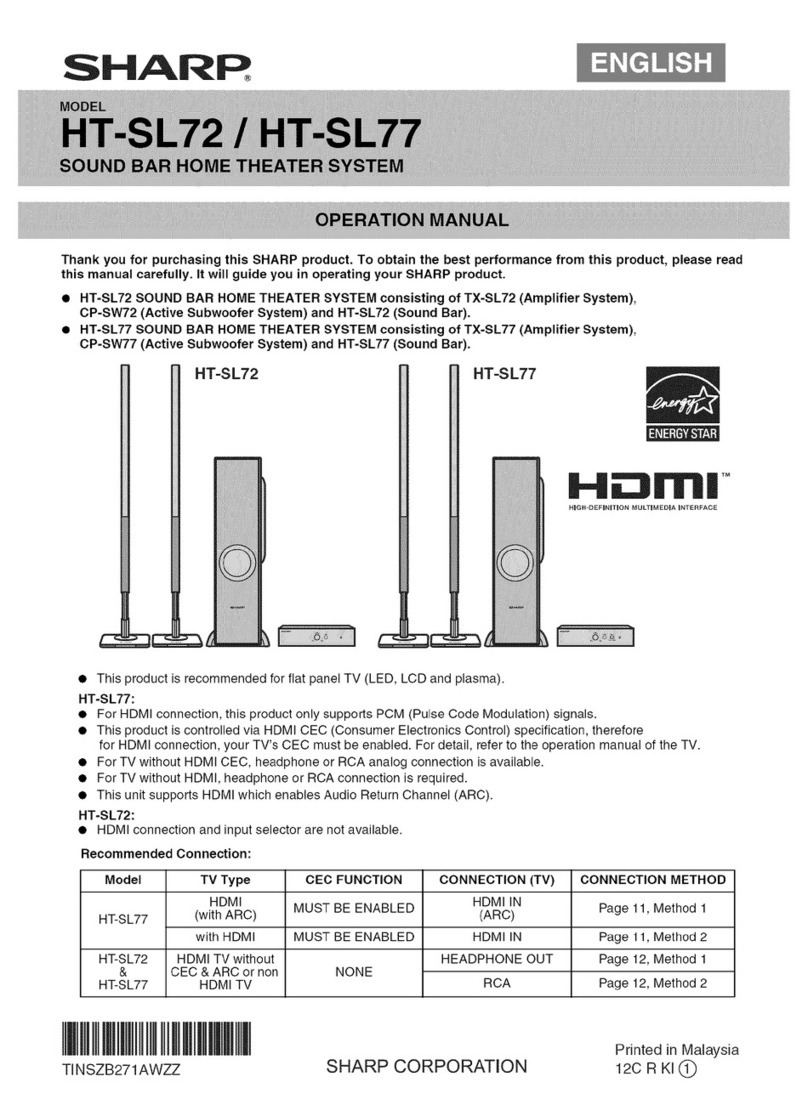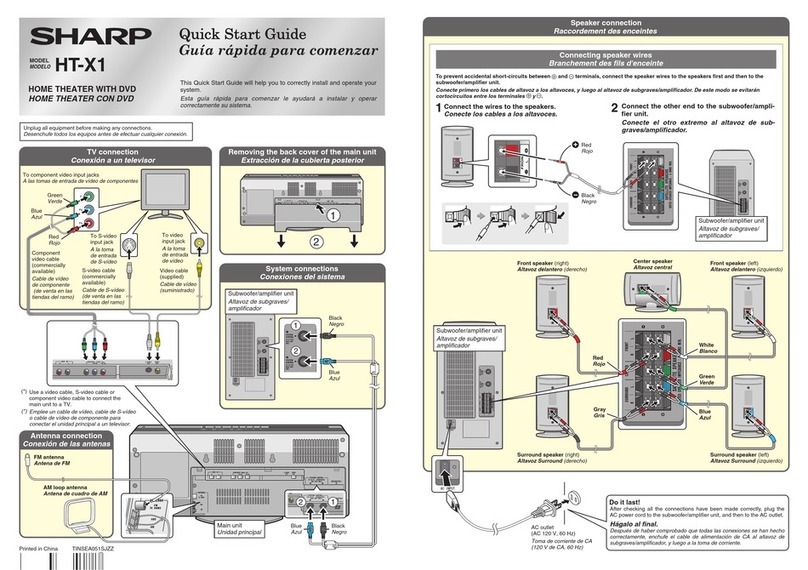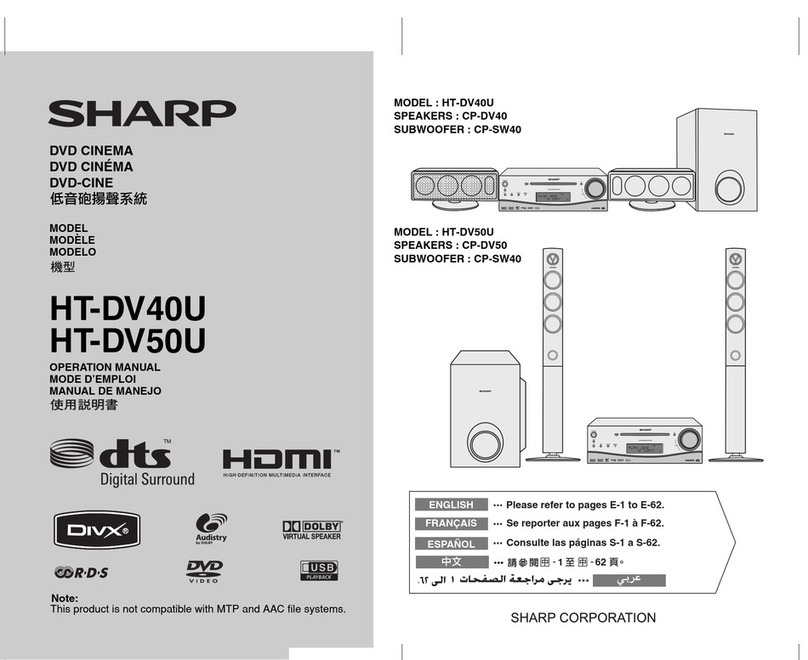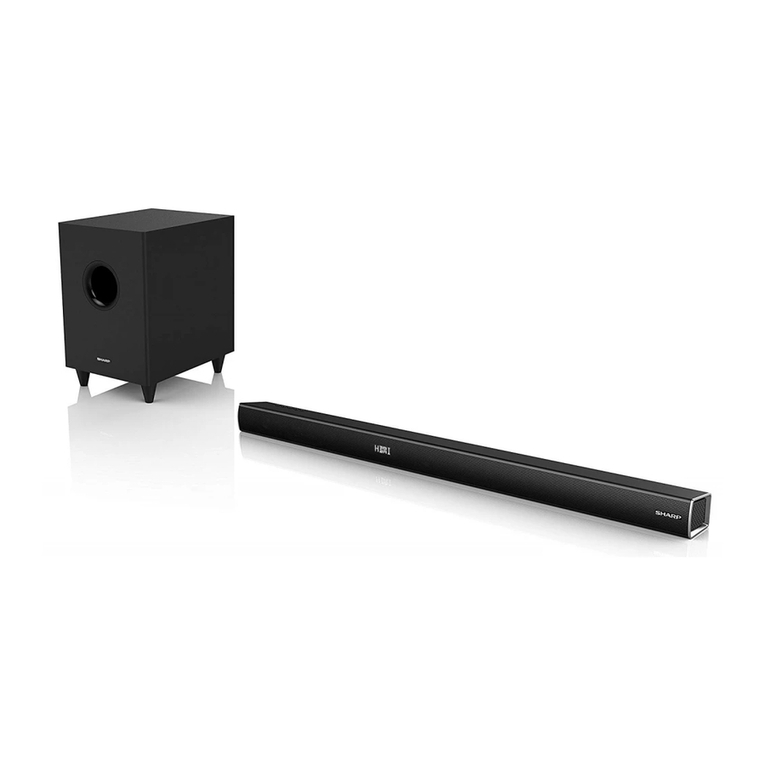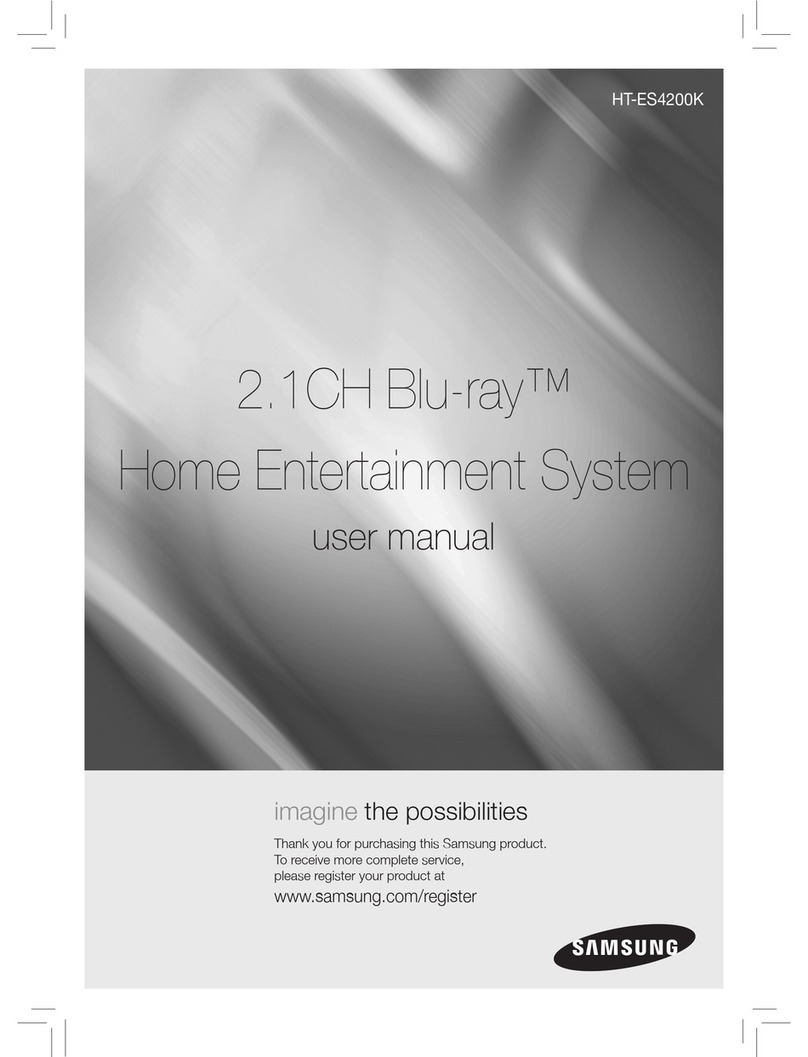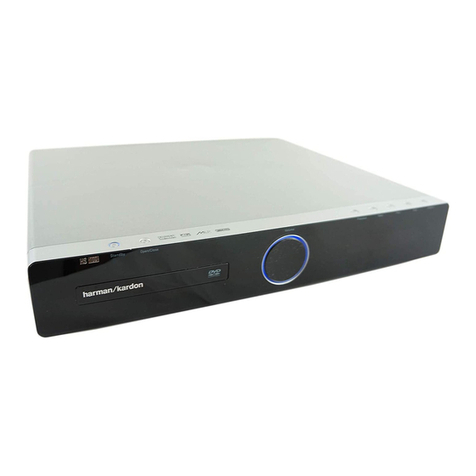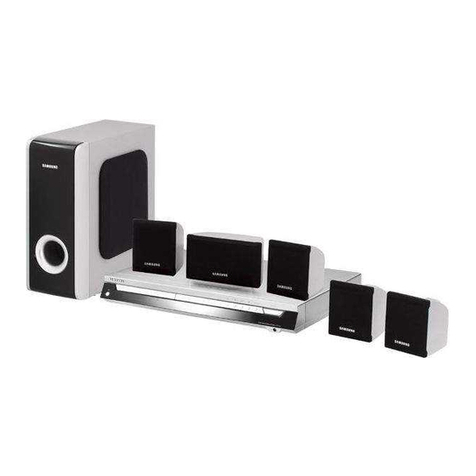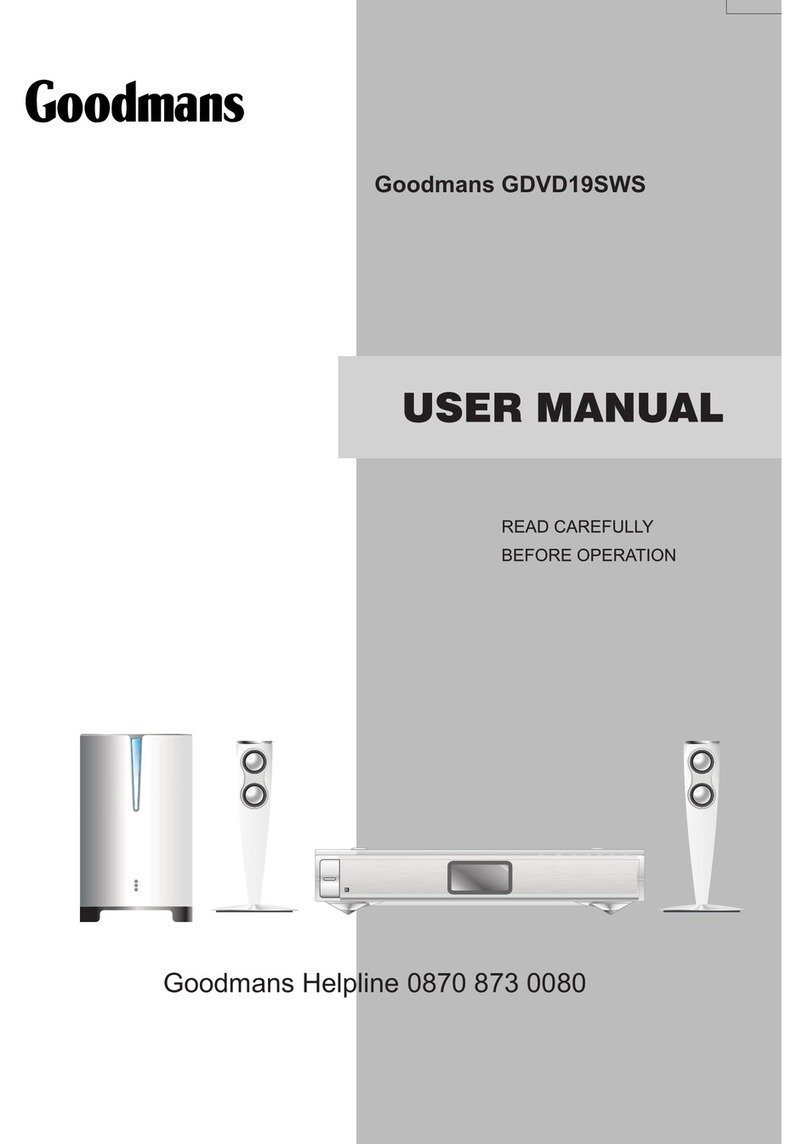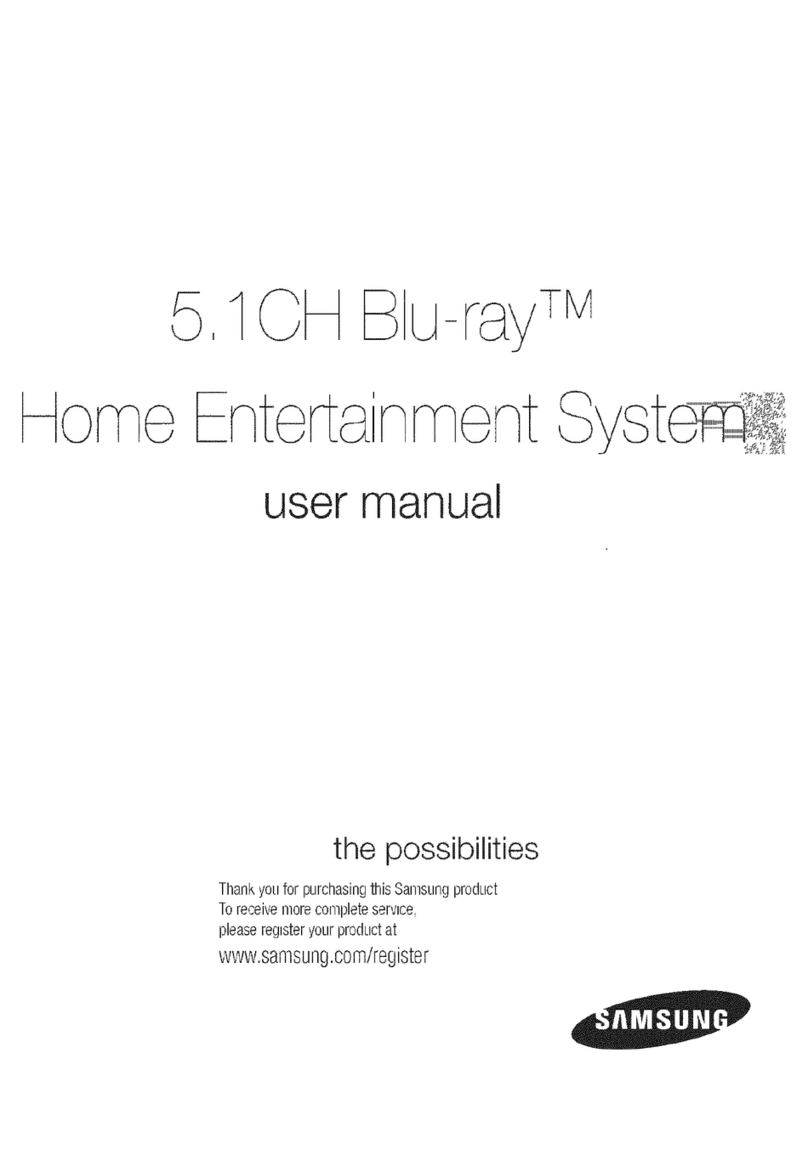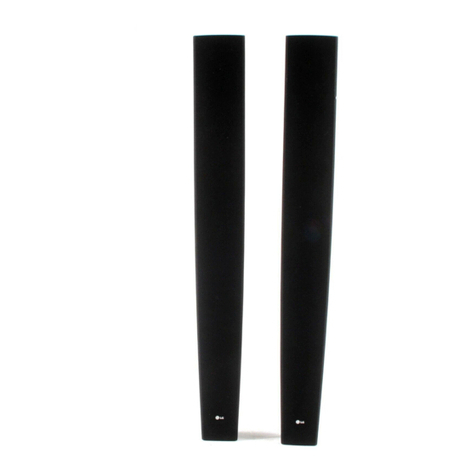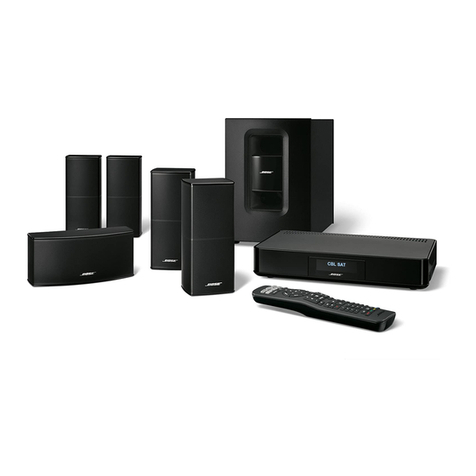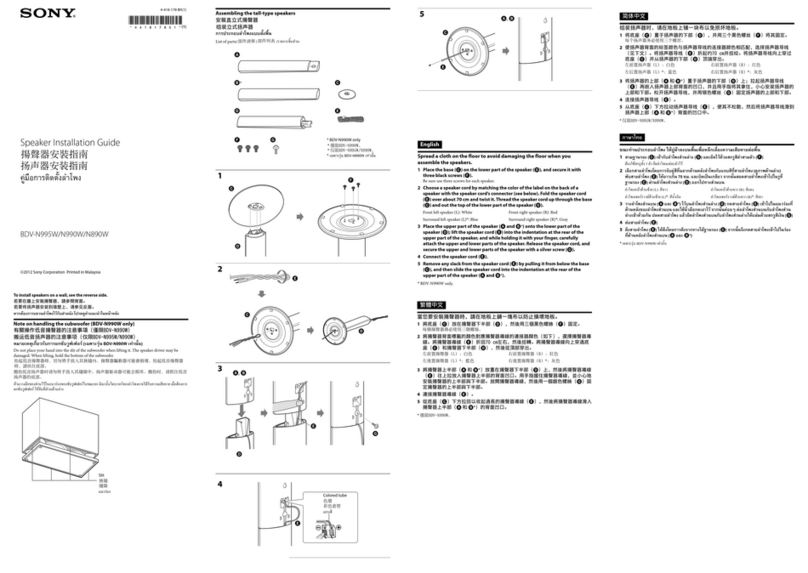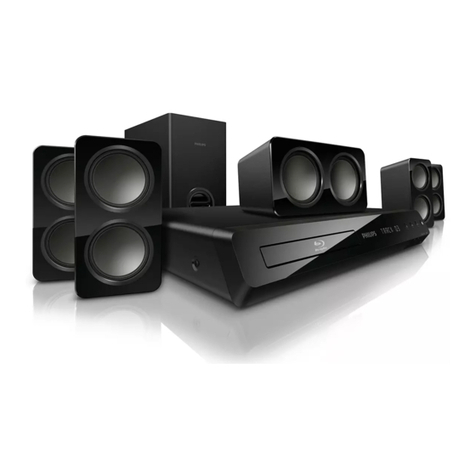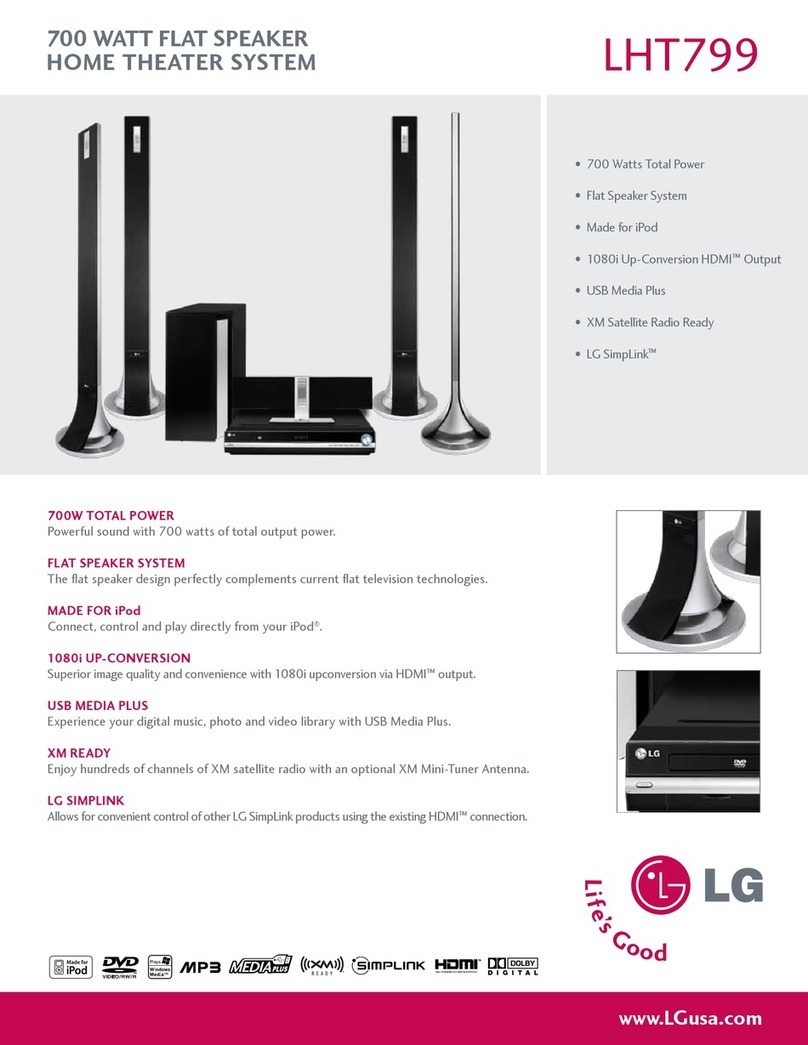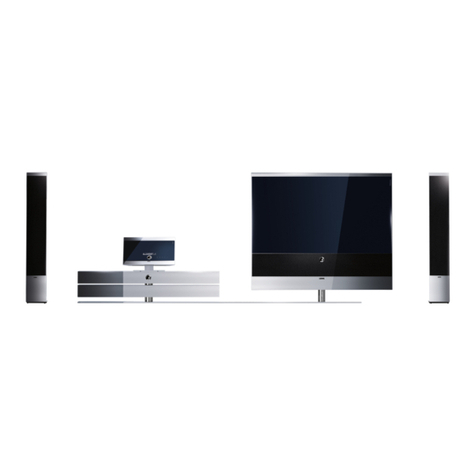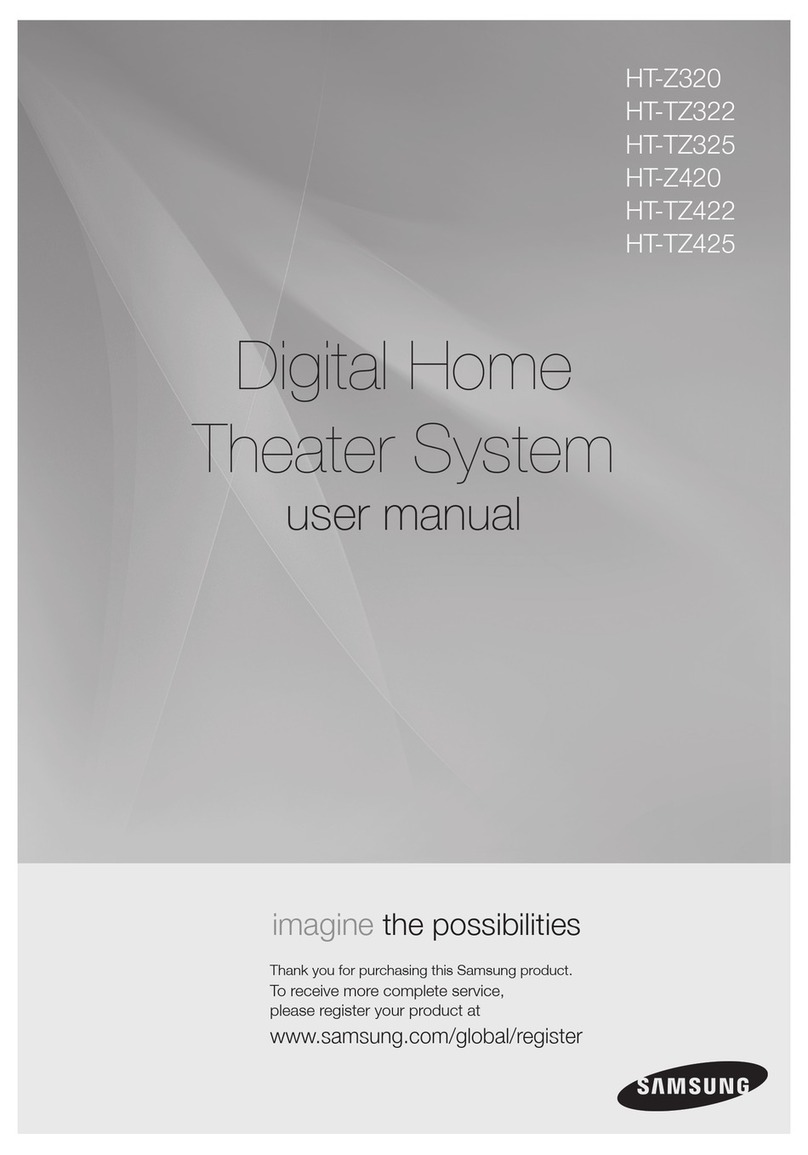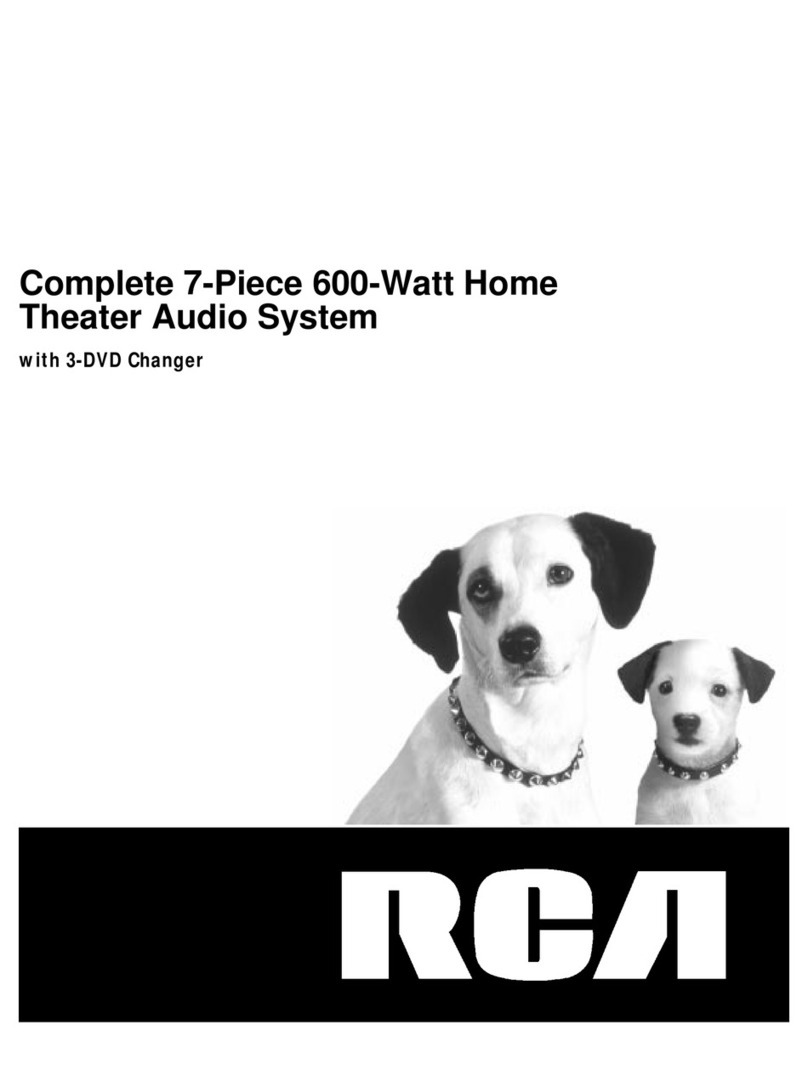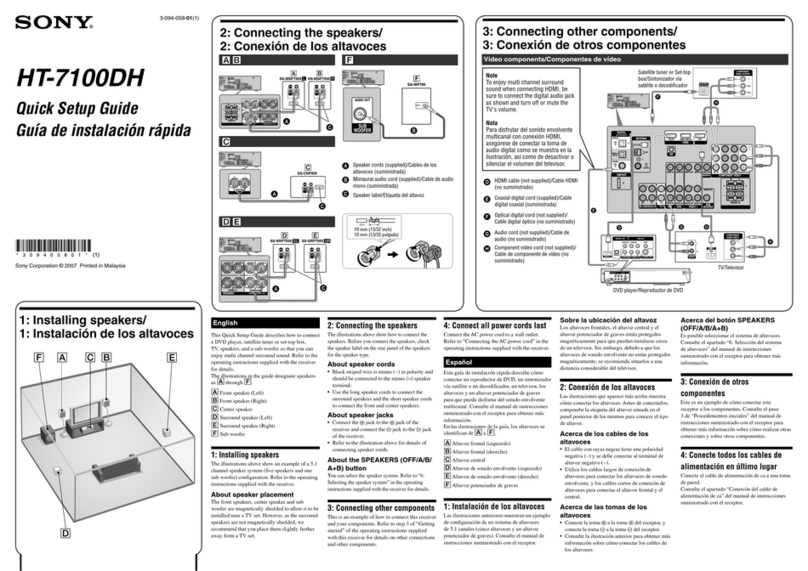
DE
Wichtige Sicherheitsanweisungen
Bitte befolgen Sie alle Sicherheitshinweise und beachten
Sie alle Warnungen. Bewahren dieses Handbuch zum
Nachschlagen zu einem späteren Zeitpunkt auf.
Dieses Symbol verweist den Benutzer darauf, das
Benutzerhandbuch für zusätzliche Informationen
bezüglich Sicherheit, Betrieb und Wartung zu lesen.
Dieses Symbol kennzeichnet eine nicht isolierte
„gefährliche Spannung“ im Inneren des Produkts. Diese
kann so stark sein, dass für Personen die Gefahr eines
Stromschlags besteht.
Bezieht sich auf Wechselstrom (AC)
Dieses Symbol kennzeichnet, dass es sich bei der mit
dem Symbol gekennzeichneten Nennspannung um
Wechselspannung handelt.
Bezieht sich auf ein Gerät der KlasseII.
Dieses Symbol kennzeichnet, dass es sich um ein Produkt
mit doppelter Isolierung handelt, das keine sichere
Verbindung zur elektrischen Masse benötigt (Erdung).
Vorsichtsmaßnahmen
Schäden
• Bitte überprüfen Sie das Gerät nach dem Auspacken auf Schäden.
Ist das Produkt in irgendeiner Weise beschädigt, bedienen Sie das
Gerät nicht– wenden Sie sich an Ihren Händler.
VORSICHT
GEFAHR AUF STROMSCHLAG
NICHT ÖFFNEN
Um das Risiko eines Stromschlags auszuschließen, entfernen Sie nicht
die Abdeckung (oder die Rückseite). In diesem Gerät gibt es keine
Teile, die vom Benutzer gewartet werden können. Bitte überlassen Sie
die Wartung qualiziertem Fachpersonal.
Stromanschluss und Zugänglichkeit
• Fassen Sie das Netzkabel nicht mit nassen Händen an. Dies kann
einen elektrischen Schlag verursachen. Wenn der Stecker nicht
in die Steckdose passt, dürfen Sie einen nicht passenden Stecker
nicht mit Gewalt in eine Steckdose zu drücken. Ehe Sie das Gerät
ausstecken, schalten Sie es bitte vollständig aus.Trennen Sie das
Stromkabel, wenn es längere Zeit nicht verwendet wird. Stellen Sie
sicher, dass der Netzstecker immer leicht zugänglich ist. Schließen
Sie keine Verlängerungskabel an.
Spannungsversorgung
• Stellen Sie sicher, dass das Gerät an eine Steckdose mit AC 100-240V
50/60Hz angeschlossen wird. Eine höhere Spannung kann zu
Fehlfunktionen oder sogar zu einem Brand führen.
Spritzgussstecker (nicht neu verdrahtbar)– nur Großbritannien,
Malta, Zypern und Irland.
• Das Stromkabel dieses Geräts ist mit einem Spritzgussstecker mit
einer 3-Ampere-Sicherung ausgestattet. Der Sicherungswert wird
auf der Stiftäche des Steckers angegeben. Sollte ein Austausch
erforderlich sein, muss eine nach BS1362 zugelassene Sicherung der
gleichen Nennleistung eingesetzt werden.
Netzkabelschutz
• Das Stromkabel darf nicht beschädigt werden. Stellen Sie keine
schweren Objekte darauf ab und dehnen oder verbiegen sie
es nicht. Schäden am Stromkabel können zu einem Feuer oder
Stromschlag führen. Wenn das Netzkabel beschädigt ist, muss
es vom Hersteller, einem Servicetechniker oder einer ähnlich
qualizierten Person ausgetauscht werden.
Kindersicherheit
• Halten Sie sich während der Nutzung dieses Produkts immer an die
allgemeinen Sicherheitshinweise, insbesondere, wenn Kinder in der
Nähe sind. Kinder sollten beaufsichtigt werden, um sicherzustellen,
dass sie nicht mit dem Produkt spielen.
Ort
• Bei Einsatz sollten Sie dieses Produkt auf eine ebene, stabile
Oberäche stellen und dabei darf kein Teil der Haupteinheit eine
Kante überragen. Alternativ kann dieses Produkt beschrieben an der
Wand montiert werden.
Belüftung
• Die Schlitze und Önungen im Gehäuse dienen der Belüftung
und zur Gewährleistung eines zuverlässigen Betriebs des Geräts,
damit es vor Überhitzung geschützt wird. Diese Önungen
dürfen nicht blockiert oder abgedeckt werden. Sorgen Sie für
einen Mindestabstand von 5cm rund um das Produkt, um eine
ausreichende Belüftung sicherzustellen. Lassen Sie niemals zu,
dass jemand– und dies gilt ganz besonders für Kinder– etwas in
die Löcher, Spalten oder anderen Önungen des Produktgehäuses
stopft, da dies zu einem Stromschlag führen kann.
Wärme und Betriebstemperatur
• Installieren Sie das Produkt nicht in der Nähe von Heizquellen,
wie etwa Heizungen, Heizregister, Öfen oder anderen Apparaten
(einschließlich Verstärker), die Hitze produzieren. Vermeiden Sie
direkte Sonneneinstrahlung.
Oene Flammen
• Halten Sie Kerzen oder oene Flammen von diesem Produkt fern,
um eine Brandgefahr zu vermeiden.
Eindringen von Wasser, Feuchtigkeit und Flüssigkeiten
• Dieses Produkt darf weder Regen, Wasser noch Feuchtigkeit
ausgesetzt werden das Risiko von Feuer oder Stromschlägen zu
vermeiden. Stellen Sie keine mit Flüssigkeit gefüllten Objekte auf
oder in die Nähe dieses Produkts.
Gewitter und Blitze
• Gewitter sind für alle elektrischen Produkte gefährlich. Wenn
die Stromversorgung vom Blitz getroen wird, kann das Gerät,
auch wenn es ausgeschaltet ist, beschädigt werden. Bei einem
herannahenden Gewitter sollten Sie alle Kabel und Stecker des
Geräts ausstecken.
Wartung
• Trennen Sie vor dem Reinigen des Produkts das Stromkabel von der
Stromquelle. Verwenden Sie einen weichen und sauberen Lappen,
um die Außenächen des Geräts zu reinigen. Verwenden Sie beim
Reinigen niemals Chemikalien oder Reinigungsmittel.
Service und Reparatur
• Dieses Produkt enthält keine Teile, die vom Benutzer gewartet
werden können. Teile aus dem Inneren des Geräts freizulegen kann
lebensgefährlich sein. Setzen Sie sich im Fall eines Defekts mit dem
Hersteller oder der autorisierten Kundenabteilung in Verbindung.
Die Garantie der Hersteller gilt nicht für Defekte, die durch von nicht
autorisierten Dritten durchgeführte Reparaturen entstehen.
Batterien
Aufstellung
• Verwenden Sie immer nur die angegebenen Batterien. Achten Sie
beim Einlegen der Batterien auf die richtige Polarität. Verwenden Sie
niemals unterschiedliche Arten von Batterien und vermischen Sie
keine neuen mit alten.
CAUTION
RISK OF ELECTRIC SHOCK
DO NOT OPEN
CAUTION
RISK OF ELECTRIC SHOCK
DO NOT OPEN
